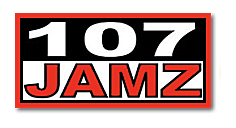
Billboard Finalizes New Streaming Rules That Will Go Into Effect in June
Hate or love it, we are now in the age where streaming music reigns supreme. While much of it is confusing, Billboard has been working hard to accurately tabulate streams with their new methodology of reporting.
On Wednesday (May 2), Billboard announced that they will adjust the way they view streams for their music charts. Currently, the tabulated results count the types of streaming plays for the Billboard Hot 100 songs chart through on-demand apps (such as Apple Music, Spotify, YouTube and Amazon Music) and programmed apps (such as Slacker Radio and Pandora), with on-demand having a greater weight.
The Billboard 200 albums chart uses a single tier (equating 1,500 streams as one album unit) for on-demand audio streams (paid or ad-supported) from subscription services. Video streams and programmed audio streams do not contribute to the Billboard 200’s calculations but are incorporated into the Hot 100.
Beginning in at the end of June (sales and streaming week of June 29 to July 5), plays on paid subscription-based services (such as Apple Music and Amazon Music) or on the paid subscription tiers of hybrid paid/ad-supported platforms (such as SoundCloud and Spotify) will be given more weight in chart calculations than plays on ad-supported services (such as YouTube) or on the non-paid tiers of hybrid paid/ad-supported services.
The change to a multi-level streaming approach reflects the global push to measure streams in a revenue-reflective and access-based manner. Music is now being consumed on several different streaming platforms in multiple on-demand experiences including playlists and radio channels.
Billboard plans to implement more changes in 2019 to better reflect the growing trend of streaming, and record accurate sale numbers from album releases.
Classic Hip-Hop and R&B Albums Turning 20 in 2018



